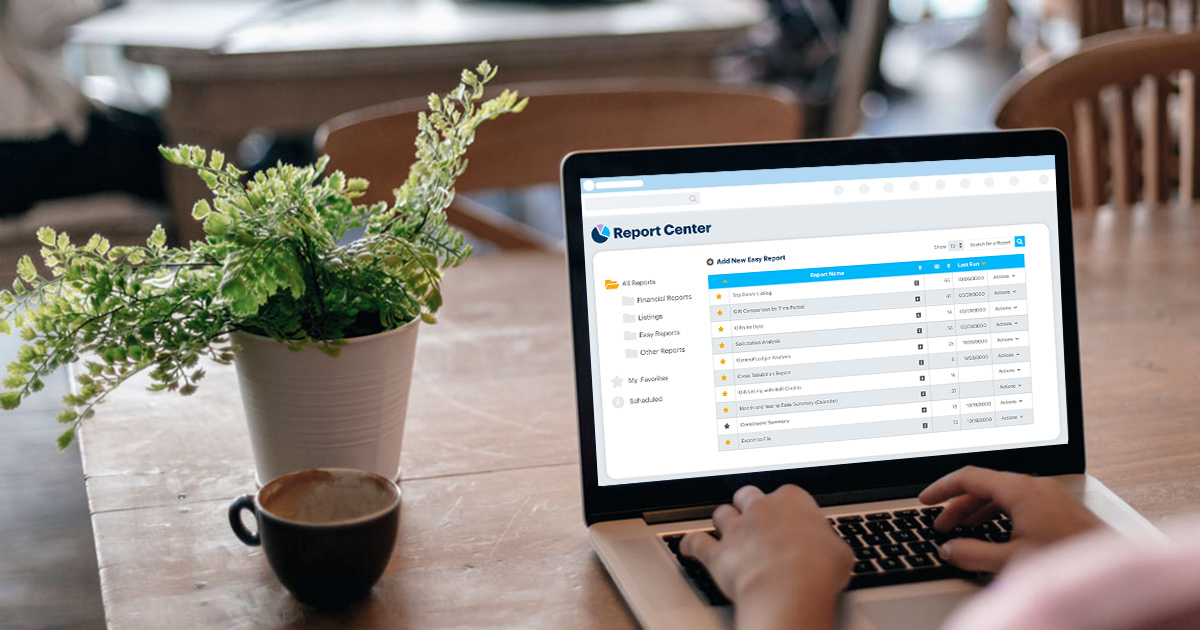Donor lapse is something that all fundraisers want to avoid. This is where LYBUNT and SYBUNT reports come in handy. These reports will give you the information you need to analyze your donors, find out who hasn’t given this year, and use that information to re-engage these important contributors.
What are LYBUNTs and SYBUNTs?
LYBUNT (lie-bunt) and SYBUNT (sigh-bunt) are seemingly strange words – but really they are acronyms representing groups of lapsed donors.
LYBUNT is a donor who gave Last Year But Unfortunately Not This year
SYBUNT is a donor who gave Some Year But Unfortunately Not This year
Why are LYBUNTs and SYBUNTs important?
There are many pockets of givers in your database but LYBUNTs and SYBUNTs are an incredibly valuable group because:
- THEY KNOW YOU: It may seem obvious, but these people already gave financially to your mission. They have heard about you from a friend, at an event, or through a program and, when they learned of you, they donated to support your efforts. That means they believe in what you are doing and they have already made the choice to be part of that!
- YOU KNOW THEM: This benefit is twofold. First, you do not have to spend time and money to acquire them as a new giver. You already have their contact information and, as mentioned above, you know they align with the aim of your organization. Second, you know why they have supported your organization in the past. These reports will help you identify if this donor gave to something specific like a program or event. Maybe all that is keeping them from supporting again is a little reminder.
Identifying LYBUNTs and SYBUNTs
Before action can be taken to re-engage donors that are already connected to your mission, you will need to find your LYBUNTs and SYBUNTs in your fundraising system. These accounts can be found by creating a report. Some CRMs, like DonorPerfect, have these reports already made for you!
If you are a DonorPerfect user, there are standard reports already loaded into your report center. Find a step by step guide to running your LYBUNT report here and your SYBUNT report here.
If you need to create your own report, the main identifier is the date of a donor’s most recent gift. Once you pull a report with that information, you can sort the donors and their gifts by most recent gift then identify givers who gave for the last time last year but unfortunately not this year.
Interacting with LYBUNTs and SYBUNTs
Now you have the information you need you can get started on bringing these donors back. Here are some ideas for reinstating past supporters:
5 tips for re-engaging LYBUNTs and SYBUNTs:
- Remind them of the value of their gift – It is possible this giver did not know the long-term impact of their generosity. Send them an email with information about their giving and how that has helped move the needle for your mission. If they provided a large gift, maybe they funded a program. If they provided a small gift, maybe they fed a meal to a family of four. All gifts have an impact and all donors should know the difference their donation has made.
- Tell them you miss them – Letting a donor know that they are an important part of your organization goes a long way. If they think their giving was just a drop in the bucket, they may not see the urgency of giving again. Letting them know that you notice them and your organization needs them is a great reminder.
- Reignite their original passion – Sometimes, giving to a nonprofit can seem like a far away idea. Maybe your LYBUNT giver needs to be reminded that their gift is closer to home than they think. Give a supporter a call and talk with them directly about the challenges your organization is addressing. They responded to your mission before, maybe a one on one conversation will remind them why!
- Reach out to them personally – As mentioned earlier, you know this giver. You can see what they have responded to in the past. Check out their donor record, identify their giving trends, then speak to them as an individual. Have they always given to one particular program? Share with them a story from that program and some plans for what is coming up. Have they always given to your golf event? Send them a Save the Date and an impact story. Have they always given on Giving Tuesday? Give them another quick, one-time donation opportunity.
- Make the ask – Maybe this particular donor has not seen an opportunity to give again since their last gift. A targeted communication sharing a current campaign or upcoming need could be just the push they require to reignite their giving.
Avoiding future LYBUNTs and SYBUNTs
- Segmentation: Donors are more likely to give again if you target them directly. Segmenting your communications can help messages to be more tailored to the recipient. You can segment by any giving criteria such as largest gift, last gift date, event attendance, or program participation.
- Noticing giving trends in your system: Your data tells an important story about each individual giver. Looking at that data for your system as a whole will help you gain insight into what resonates most. Pulling reports like LYBUNT and SYBUNT more often will help you identify what is working or what you need to watch for. Was there a specific time of year where people gave then never engaged again? Did you present an opportunity to give to a program that moved many people to action? Is there a certain gift amount threshold that people are not giving again? You can look for data trends to help you identify ways to avoid this in the future.
- Keep the conversation open: Hearing back from a donor is always incredibly valuable. In this case, hearing back from a lapsed donor can shed light on why they have not given recently. Send them this lapsed donor survey to give them a voice and to give you an understanding.
Your nonprofit data is meant to help your organization make more informed decisions that will ultimately lead to more revenue for your mission, not make your job harder than it needs to be. The Clean Data Checklist, available for free download below, is a customizable guide for your nonprofit data procedures, complete with best practices and examples. Here’s to healthier data that leads to better results!







